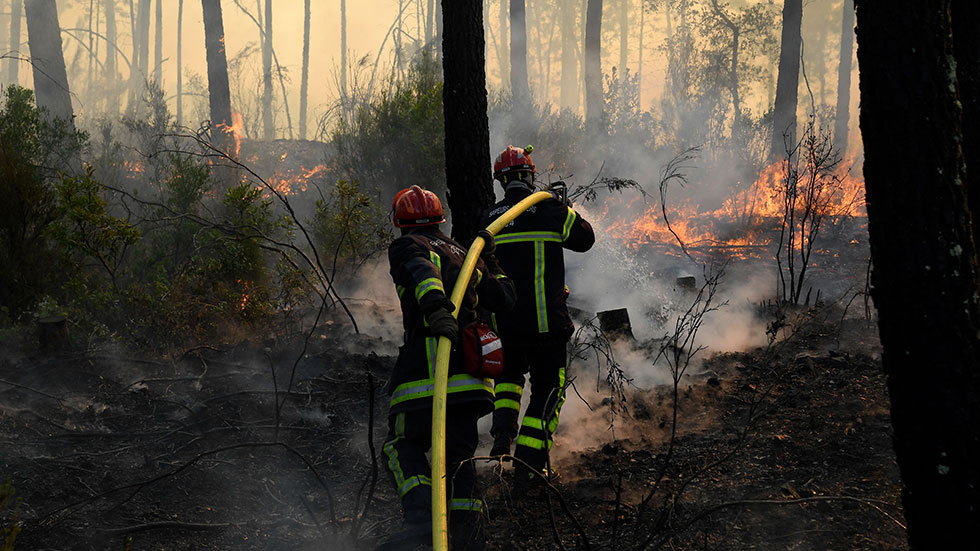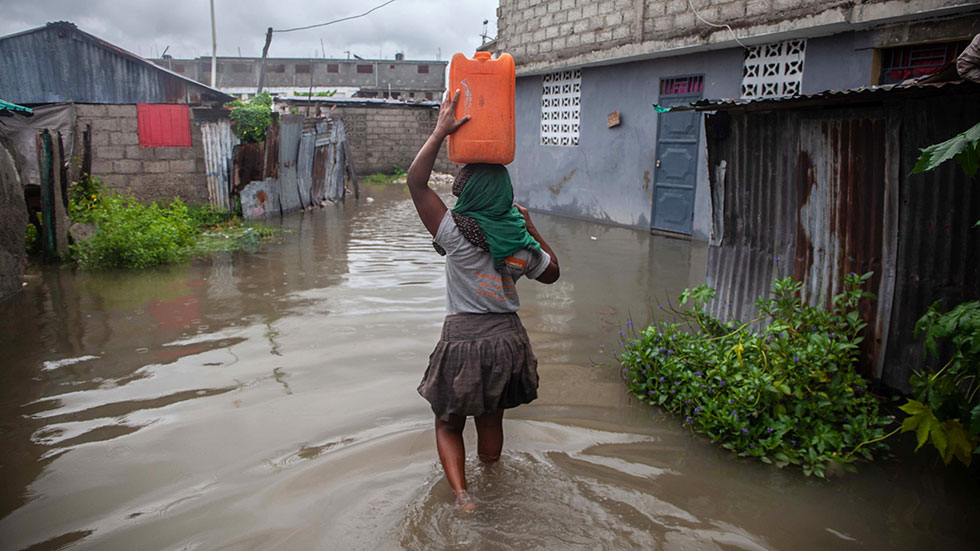The Hill’s Sustainability Report: Cities are making mammals bigger
Cities are making mammals bigger
Today is Wednesday. Welcome to Equilibrium, a newsletter that tracks the growing global battle over the future of sustainability. Subscribe here: digital-staging.thehill.com/newsletter-signup.
City living is making mammals bigger — and that’s throwing a wrench into one of the key assumptions about how climate change will affect animals.
After going through 140,000 measurements of size and weight from more than 100 North American animal species, a team of researchers from the Florida Museum of Natural History came to an inescapable conclusion: “City-dwelling mammals are both longer and heftier than their rural counterparts.”
“That wasn’t what we expected to find at all,” museum curator Robert Guralnick said in a statement. The hot-weather members of a group tend to be smaller than the cold-weather ones — think brown versus polar bears — and cities tend to be far hotter than the surrounding countryside.
But that belies the dramatic, novel change that cities pose to the landscape — and the new web of niches and food sources that they offer animals as well as people.
Urban environments today are facing an additional conundrum — fires and smoke billowing in from forests throughout Europe and the American West. Today, we’ll look at just why there is so much simultaneous fire. Then we’ll turn to America’s university laboratories, where research teams are working to create a post-fossil fuel future for manufacturing.
For Equilibrium, we are Saul Elbein and Sharon Udasin. Please send tips or comments to Saul at selbein@digital-staging.thehill.com or Sharon at sudasin@digital-staging.thehill.com. Follow us on Twitter: @saul_elbein and @sharonudasin.
Let’s get to it.
The global fires are about more than climate change

Ever get the sense that the world is on fire?
- The Caldor Fire near Lake Tahoe jumped from 6,000 to 54,000 acres in less than 24 hours, prompting mass evacuations across Northern California’s El Dorado County, according to the San Francisco Chronicle.
- The lush hills bordering Saint-Tropez have transformed a ritzy French Riverian beach resort into what France 24 described as an “inferno” — killing at least two people by press time.
- Multiple blazes were ravaging regions of Greece, following other recent or ongoing flare-up events in Turkey, Bulgaria, Albania, Northern Macedonia, Italy, Spain, Portugal, Tunisia, Algeria, Israel, Morocco and Siberia, CBS News reported.
- Smoke has drifted from the Pacific Northwest to New York City and wafted as far as the North Pole.
We’ve brought you such coverage since Equilibrium’s launch in June, telling stories of lives lost, homes evacuated and smoke-filled skies that make healthy breathing a challenge. And unfortunately, it seems that well into this fall, we’ll continue to tell such stories.
But as the blazes ravage communities across the world, we’ve begun to wonder, what is going on this summer? Why are these flames, as described by Wired, suddenly “metastasizing into monsters that obliterate ecosystems?”
It’s not just the climate. Two compounding factors that have turned our wildfire regime from “good” into “bad” — yes, climate change, but also a long history of fire suppression, according to Wired.
Fires of the past “would polka-dot a landscape, creating a patchwork of burned clearings in the forest,” Wired reported. The burn scars generated from those fires would then create “a firebreak during future blazes” and prevent those areas from igniting again.
Such fires also prevented the overgrowth of certain plant species — removing both sickened individual trees and preventing low-lying vegetation from amassing into a stockpile for future conflagrations, the Wired piece explained.
“Even if you had a hot and dry year, historically that wouldn’t necessarily have led to all of a sudden fires exploding everywhere—there just wasn’t enough to burn,” Christopher Adam, a fire specialist at Oregon State University, told Wired.
LAND MANAGEMENT GONE AWRY
European settlement brought fire suppression: The growing residential and industrial landscape throughout western North America meant that residents were putting out wildfires as quickly as possible, which led to a dangerous logjam of fire fuel, the Wired piece said. In southeastern British Columbia, for example, where there was once fewer than 50 trees per hectare, fire suppression has led to forests that contain about 10,000 trees per hectare.
And around the Mediterranean, similar fire suppression policies, combined with decades of mass migration to cities, led to new forests springing up on abandoned farmland for the first time in centuries. Add that to the poorly planned introduction of highly flammable cash crops like eucalyptus and pine, mix in a dash of climate change, and you have a landscape just as ready to burn as the American West.
Forests have lost “herd immunity”: With the double risk factors of readily available fuel and the elimination of natural firebreaks, forests have lost their “herd immunity,” Wired explained. These conditions now allow blazes to “spread quickly because they have so many new areas they can ‘infect,’” leaving flora and fauna unprepared in the face of such an attack.
Meanwhile, the change in climate has cut away the room for error. The past two decades have seen increasingly dry and windy conditions, with strong high pressure surging in the Pacific and pushing storms North — ensuring that the rain stays away, according to NBC Bay Area.
In California alone, about 85 percent of the state’s largest fires on record have occurred since the year 2000, NBC reported, citing just three exceptions in 1932, 1970 and 1977 — showing how these used to be once-in-a-career events.
Technological advances are also in question: The Pentagon has been funneling data to firefighters from its classified infrared satellite systems, which has helped track and spot wildfires around the country since 2019, the Los Angeles Times reported.
But access to that critical system is scheduled to end on Sept. 30, and the Department of Defense has not said whether the program will continue, according to the Times. A group of 31 Californian Democrats are therefore demanding that the program be renewed. A failure to do so, they argued, would bring “new dangers to firefighters on the front lines.”
What can be done? Fire scientists say that the solution involves implementing more controlled burns, according to both Wired and to Equilibrium’s past reporting.
Deploying such efforts will require cross-agency — and sometimes cross-border — coordination, as well as the funds for the equipment and manpower necessary. But it will require something else too: a generational shift in thinking about the role of fire in a healthy dry forest — like those in California and the Mediterranean.
Woven fabric turns heat into electricity

A Rice University lab has woven a carbon fabric that can convert heat energy into electric energy — potentially opening the pathway for new forms of textile electronics.
And that’s just one of a series of advances this week in materials science that offers a glimpse of the future of manufacturing after petroleum.
Nanotubes 101: Imagine a hexagon with a carbon atom at each point, spun around to make an open mesh tube. That’s a carbon nanotube in its simplest form: an extremely strong latticework that can be woven to infinite length — and that in many cases can be a powerful electric conductor or semiconductor.
But the challenge of large-scale manufacturing has been developing “macroscopic” — that is, normal-life scale — fabrics.
Now a team of scientists at Rice University has woven nanotubes into squares of cloth a centimeter across — firmly in the macroscopic range — that can transform heat energy directly into electric energy. Their findings, which appear in a recent Nature Communications article, were detailed on Science Daily — a site that aggregates scientific news releases.
So what? The team’s breakthrough was in creating a special form of chemically treated fabric that they could electronically tune to make it conduct far more electricity than competing fibers. When heat hit one side of that fabric — from a lab hot plate, as in the experiment, or (potentially) from the sun — it created a usable current to the cool side that lit up an LED light.
Conversely, energy pumped into the fabric cools the hot side — and the whole thing can be woven to potentially infinite length, graduate student and lead author Natsumi Komatsu said in the press statement.
“Whether the new research leads to a solar panel you can throw in the washing machine remains to be seen,” the statement said. But the door is now wide open to make fabrics that blur the line between textiles and high-tech.
NEW MATERIALS FOR A POST-FOSSIL AGE
Two birds, one stone: Another key question is whether the chemicals industry — built as it is on a bedrock of fossil fuels — can substitute plant matter into its industrial processes.
One team at the University of Illinois at Urbana Champaign found that they could pull the organic compounds acetate and xylose out of the fibrous bodies of switchgrass plants — allowing them to “use what’s been considered a toxic, useless substance as a supplementary carbon source … to economically produce fine chemicals” like vitamin A, study author Yong-Su Jin said in a statement.
Jin’s study, also published in Nature Communications, cracks a deeper problem in plant-based manufacturing and biofuels: how to efficiently break down lignocellulose, the hard material that forms the woody “skeleton” of most plants — opening the way to new forms of fuel and chemicals drawn from plants like switchgrass.
Breaking down the house: The problem of breakdown haunts plastics in general — complicating dozens of plastics-recycling-to-energy schemes funded by the industry, as Reuters reported.
The problem is a Catch-22: Easily recyclable plastics are made to easily break down. That means they melt more easily — and are generally less useful — than the traditional, more polluting ones.
So a team at University of Akron has created a particularly robust type of polymer — a long chain of repeating molecules that make up materials like plastics — whose thermal stability approaches those of traditional rubber and plastics. But this polymer can also break back down easily into simpler components that can be easily recombined again into new polymers, forming a circular economy.
Takeaway: The tragedy of plastics is that they work so well — and fossil fuels have been so cheap — that we filled the ecosystem with them. But the return of scarcity as the fossil fuel age winds down may lead to a burst of creativity that leaves us with smarter, lighter, more disposable replacements.
Weather Wednesday

Hard times in the Caribbean Sea.
Haiti earthquake death toll nears 2,000 as Tropical Storm Grace washes in
- Just days after a 7.2-magnitude earthquake killed at least 1,941 people, leaving 9,900 injured and almost 61,000 houses destroyed, Tropical Storm Grace swept onto the island, The Wall Street Journal reported.
- The tropical storm poured between 5 and 10 inches of rain across Haiti, with some areas receiving as much as 15 inches, the report said, citing the U.S. National Hurricane Center.
- Many makeshift shelters were torn apart by the winds, while rescue teams had to temporarily abort operations due to the storm, according to the Journal.
- Some survivors struggled amid floods and mudslides to salvage pieces of their homes and bury their loved ones in mass graves, without any help from the Haitian government, The New York Times reported.
- “I don’t expect any help, we’re on our own,” one resident told the Times. “No one trusts this government here.”
Study: Rising seas push salt into inland reservoirs
- The ancient Maya city-states may have fallen in part because of rising seas — which has serious implications for the more than 6 million people living on the Yucatan Peninsula today, a team from the University of Waterloo has found.
- The Maya cities, like current ones, depended on a thin layer of stored rainwater that dripped into the hollows and caves in the porous limestone bedrock of the peninsula.
- Those hidden lakes are deep inland — but the team found that sea tides still affected them, causing both water and salt levels in underground lakes to vary with the tides.
- That raises the threat of saltwater intruding into inland reservoirs as sea levels rise.
- For the ancient Maya, one professor noted, it meant “the water stops being good for drinking and even stops being useful for irrigation. When you can’t irrigate your crops, you can’t have a city of 40,000, like some of the Maya cities were.”
{mosads}Please visit The Hill’s sustainability section online for the web version of this newsletter and more stories. We’ll see you on Thursday.
Copyright 2024 Nexstar Media Inc. All rights reserved. This material may not be published, broadcast, rewritten, or redistributed..











